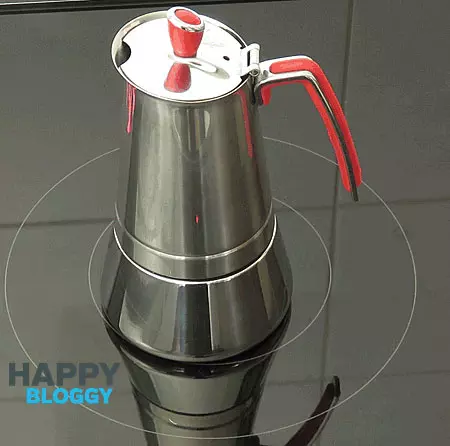The forgotten gem
The Moka pot often called the Stovetop espresso maker. One of the simplest ways to make coffee. All that is needed is a cooker and a Moka pot. Scales and a grinder are advantageous but not essential.
Estimated reading time: 5 minutes
Table of contents
Having not used one of these on a regular basis for at least 10 years. The Moka pot had somewhat fallen off my radar. In recent times I have spoken to many people who have not used anything else! There I am wrapped in the espresso machine and filter coffee bubble. Meanwhile there’s all sorts going on around me. I hadn’t noticed.
Moka Pot historical brews
Recalling the first time I ever had ‘real coffee’. It was in one of these Moka Pots. A pot of more traditional design. At the time I was a starving musician struggling with every bill. Needless to say I couldn’t afford such luxuries on a daily basis.
Moving on a couple of years later and I found myself recording and hanging out in some pretty good studios. That is where my taste for coffee really began. It was also where I would start to troubleshoot machines, because nobody else could be bothered !
Curiosity and coffee FOMO
Just before Christmas 2018 I decided to buy one. Surprising to see that not a lot had changed in 20 years. Most Moka Pots hold onto the classic look with sweeping lines. Most are made from Aluminium.
I bought a stainless steel Moka Pot for several reasons. First they look so cool. Second they are made in Italy. Last and most important of all. Stainless works on electric as well as gas rings. My currrent cooker is all electric.
The mokka pot I have is a 4 cup. Meaning you get 4 espresso sized shots at most. The reality is for most brews some water is lost in evaporation and so you never quite get the whole four cups. There are now a few of these in stock in the shop so impressed are we with this product.
How to make coffee in a Moka pot
As with any method, it’s all in the grind. Unlike most brewing methods what you are after is a coarse grind, you need to get down and gritty 🙂
Rubbing the coffee grinds between finger and thumb you want to feel grit. No talcum powder or softness just grit. There should be no doubt in your mind. You need to be feeling pure grit.
Begin by unscrewing the pot. This reveals the holder where the coffee goes. Underneath that is the water chamber. Put 56ml of mineral water in there. Put 15 grams of coffee into the holder and flatten or tamp the coffee grinds a little.
Screw the top of the Mokka pot back on and place the pot on the cooker on a low to medium heat. Most brews will take about 6 minutes. The brew is complete when all the water from the lower chamber has made it’s way to the upper chamber.
When the transfer from lower to upper is happening a roaring bubbling sound can be heard. At your own risk it is possible to lift the lid to view this happening. Traditional pots will make a whistling noise like a an old kettle when done.

Different coffees in a Moka Pot
Happy Donkey Costa Rica beans were the most natural choice to start with. Those who are less experienced will not put a single origin like Costa Rica through an espresso machine. That’s because they fear failure. Get the grind right though and the rewards are stunning.
Using Costa Rica in a Mokka Pot or french press it’s easier to get good results. The texture of the coffee is almost gravy like, it’s different from espresso. The mouthfeel is unique and unlike using any other brewing method.
The over all result is very pleasant indeed, the tones are extremely sweet but not overly so. The body is bold but not too strong. It works well with a touch of sugar in the shot glass. Should you dare to indulge.
Classic Italian
Moving on to the Happy Donkey espresso blend Classic Italian. Using the same grind gets the thumbs up too. Anyone who uses this espresso blend will tell you it’s flexible. It can reveal a whole arsenal of notes and flavours depending on the grind and method used. Using the Mokka pot I get strong hints of malt amongst others, a total first for me.
The best way to describe the result would be to say it’s like refined espresso. Hints of berry, a slight spiciness, mulled wine, a touch of peach and as mentioned above malt. Once again the mouthfeel is fantastic and unique.
The caffeine buzz is much slower to kick in when compared to espresso. When it does kick in you will feel it. It’s a smooth affair and grows at a pleasant rate and doesn’t crash out like espresso sometimes can.
In conclusion
The Mokka pot is an easy and cheap way to make small volumes of quality coffee. It’s fully transportable, easy to clean and maintain. You can take this anywhere.
The Mokka pot gives of a unique aroma which fills the kitchen and surrounding area. Like no other method does.
This coffee making method is steeped in history and culture throughout the world. Many peoples first shot at real coffee was down to the Mokka pot. Whilst a gritty grind is preferred a finer one still works no problem.
You don’t get big crema and with most coffee you get none at all. But that really is the whole point. It’s a unique method with unique results. It’s all about the taste.
The Mokka Pot makes for an excellent coffee Birthday or Christmas present.
Those who immediately dismiss this way of making coffee are missing out through blind snobbery.
Yes the coffee boils but it does not burn. There simply is not enough pressure going on inside to do that.
I love this method and for me it’s just one behind espresso. Without all the fuss.

